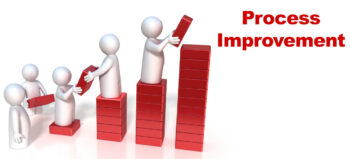As an office manager, one of your key responsibilities is ensuring that processes run smoothly and efficiently. But even the best systems can benefit from continuous improvement. By applying the right process improvement techniques, you can enhance productivity, reduce waste, and create a more streamlined workflow.
One of the most effective techniques for process improvement is Lean Management. Lean focuses on identifying and eliminating waste within a process, whether it’s time, resources, or effort. Start by mapping out your current processes in detail, looking for any steps that don’t add value. For example, are there tasks that could be automated? Is there redundant paperwork? By cutting out these inefficiencies, you can create a leaner, more effective workflow.
Six Sigma is another powerful tool for process improvement. It’s a data-driven approach that aims to reduce variation and defects in processes, leading to higher quality and consistency. You can apply Six Sigma principles by collecting data on your processes, analyzing where errors or delays occur, and implementing changes to minimize those issues. While Six Sigma often requires specialized training, even a basic understanding of its principles can help you make more informed decisions about process improvements.
Kaizen, or continuous improvement, is a technique that encourages small, incremental changes over time. Instead of waiting for a major overhaul, Kaizen focuses on making constant, small adjustments that gradually improve the overall process. This approach is particularly effective in an office setting where small tweaks—like rearranging a workspace for better efficiency or streamlining a routine task—can have a big impact over time. Encourage your team to adopt a Kaizen mindset, where everyone is always looking for ways to improve their work.
Process Mapping is another valuable technique for improvement. By visually mapping out each step of a process, you can identify bottlenecks, redundancies, and areas for improvement. Process maps make it easier to see where tasks might be getting stuck or where resources are being wasted. They also serve as a useful communication tool, helping everyone on your team understand the flow of work and their role in it.
Root Cause Analysis (RCA) is essential for addressing recurring problems. If you notice that certain issues keep popping up, RCA helps you dig deep to find the underlying cause, rather than just treating the symptoms. Techniques like the “5 Whys”—where you keep asking “why” until you reach the root of the problem—can reveal insights that lead to lasting solutions.
Finally, consider the PDCA Cycle (Plan-Do-Check-Act) for continuous improvement. Start by planning a change based on your observations, then implement it on a small scale. Check the results to see if the change had the desired effect, and if it did, act to implement it more broadly. If not, revise your plan and try again. This cyclical approach allows for ongoing refinement and adaptation, ensuring that your processes continue to improve over time.
By applying these process improvement techniques—whether it’s Lean Management, Six Sigma, Kaizen, Process Mapping, Root Cause Analysis, or the PDCA Cycle—you can create a more efficient, effective office environment. These methods not only help you streamline operations but also foster a culture of continuous improvement that benefits your entire organization.
